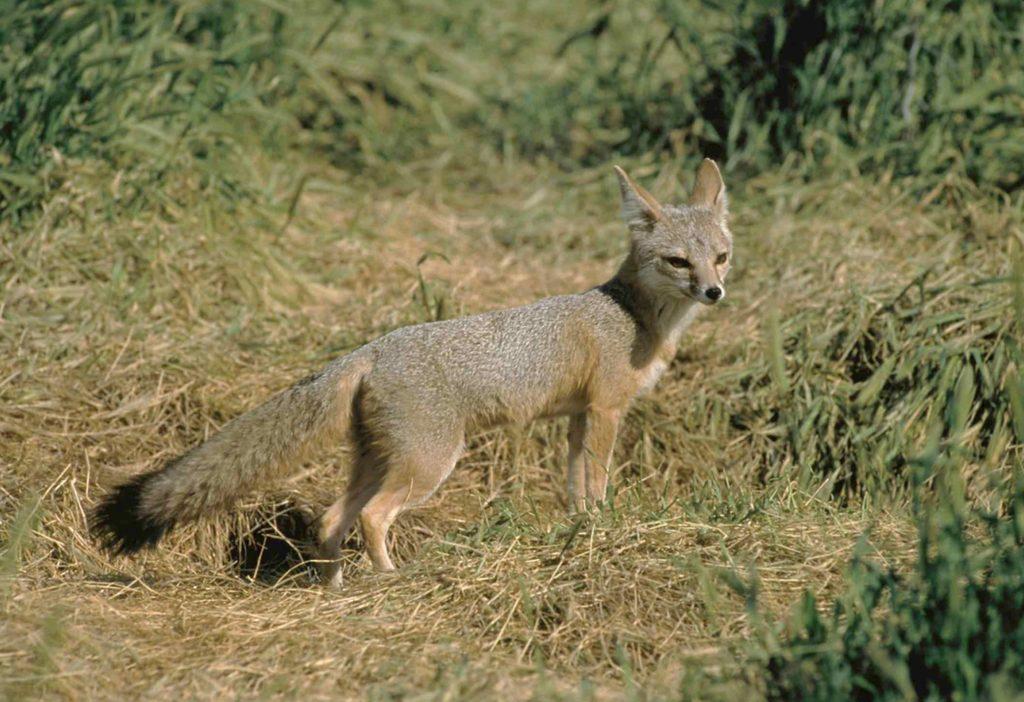Reporter
An outbreak of mange has killed over 100 endangered San Joaquin kit foxes, causing the squirrel population to increase at CSU Bakersfield. To combat the rising population, the campus has employed several control methods, one of them being a carbon monoxide device.
Michael Lukens, Interim Chief of Staff to the President of CSU Bakersfield, was able to provide further details on how the squirrels are controlled.
“The CSUB Grounds Department purchased a piece of equipment to humanely dispose of the ground squirrels using carbon monoxide,” said Lukens. “In areas where the equipment cannot be used, we trap. In addition to the work of our grounds staff, we also have a wildlife consultant to remove skunks, opossums and raccoons.”
It’s unknown what happens with the squirrel bodies.
Predators are common and usually an ecologically friendly way to deal with pests. There are plenty of predators that feed on the California ground squirrel that aren’t a threat for the students, which include red tail hawks, coyotes, gopher snakes, and various species of foxes, including the kit fox.
However, an infestation of mange has infected the kit fox population on CSUB’s campus and has decimated them.
Dr. Brian Cypher, a researcher for CSU Stanislaus who has studied the foxes here, explained how deadly this disease is.
“Sarcoptic mange is 100% fatal to the foxes if they are not treated,” said Cypher. “They die within 4-5 months of contracting the disease. We don’t know exactly how many animals have died. It likely is over 100. The Bakersfield kit fox population appears to have declined by over 50% since mange was first detected in 2013.”
The use of a carbon monoxide device, while effective, can be problematic practically and ethically. While this would lower the squirrels’ numbers, if the burrow had been claimed by different animal, say for example a kit fox, then it would suffocate and die.
The reason why the ground squirrels need to be controlled is because of the damages they can inflict. Dr. Amber Stokes, a biology professor at CSUB, provided some examples of what the ground squirrels can do.
“When burrowing, (the ground squirrels) often will chew on roots of trees and other plants,” said Stokes. “This may kill the plant outright, or open the plant up to fungal pathogens, which can cause the plant to die sometime in the future. On occasion, ground squirrels will also chew on plastic irrigation lines -both under and above ground- which then have to be repaired or replaced. Additionally, they dig holes in manicured areas like the grassy areas on campus. While someone could potentially trip on these, on its own, this is mostly a cosmetic issue.”
Dr. Cypher did have one last thing to say regarding the kit foxes.
“CSUB has been extremely accommodating over the years in allowing us to conduct research and conservation activities on campus,” said Cypher. “However, I’ve always been a bit disappointed that the university hasn’t really embraced kit foxes. Other than ‘tolerating’ kit foxes and trying to conserve some dens (when not inconveniently located), the university hasn’t really done anything to encourage them or take pride in the fact that CSUB is the only university in the world with an endangered canid living and breeding on its campus. They are really missing out on conservation, education, and outreach opportunities.”
Lukens responded with the following.
“We go out of our way to make sure we work closely with biologists to minimize any disturbance of kit foxes or their dens,” said Lukens. “The CSUB Facilities Department works closely with CSU Stanislaus as they have a major program dealing with kit foxes. We do everything we can to make sure we are not disturbing them – especially natal dens.”
Image Credit: Peterson B Moose, USFWS








